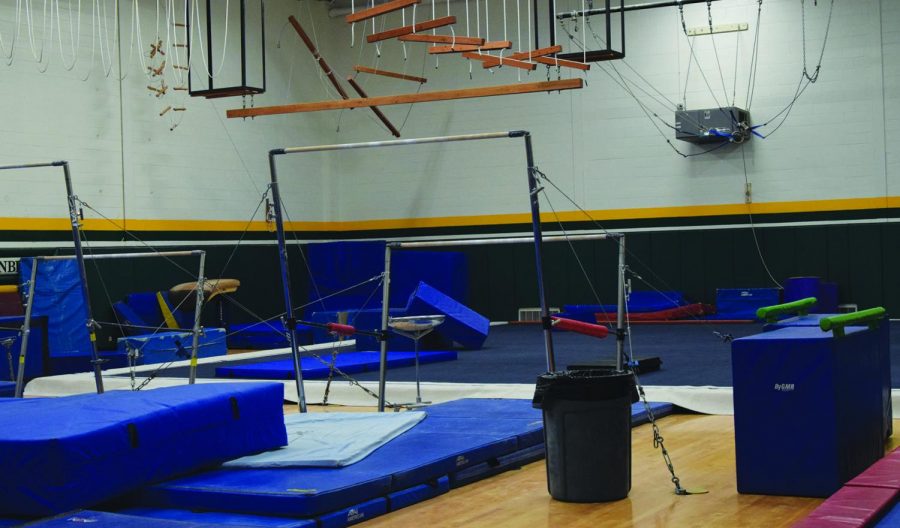Gymnastics struggles with low participation statewide
When gymnast Sammie Swafford first heard about the possibility of the IHSA removing its gymnastics postseason, she brushed it off as a rumor.
“I was like, ‘No, that’s not going to happen,’” said Swafford in a video conference. “But it kept … getting brought up more and more.”
The IHSA, a not-for-profit, private organization, has not made any official efforts to discontinue Regionals, Sectionals, Super-Sectionals or the State Finals for boys or girls gymnastics, but has attempted to address the programs’ financial burden.
Matt Troha, IHSA assistant executive director, said in a phone interview that the IHSA does not expect to break even on every sport — many operate at a deficit. The IHSA is sustained largely through attendance at football and basketball games.
Rather than looking at profit margins to determine which sports postseasons to possibly discontinue, the IHSA looks at whether or not at least 10 percent of its over 800 member schools participate. Girls gymnastics has hovered at 80 schools in the past few years, while boys gymnastics has around 50 schools, Troha said.
Carlos Fuentes, gymnastics coach at Glenbard West, is part of the IHSA Girls Gymnastics Advisory Committee. Fuentes said in a video conference that the IHSA has dealt with deficits at the gymnastics meets by “trimming the costs” of the competitions. This included lowering the number of judges at events and eliminating large projection screens.
Fuentes has been part of the Illinois High School Girls Gymnastics Coaching Association for about 20 years, and for the 2019 State Finals, the group made a push to attract spectators through social media campaigns. The attendance at the meet was the highest in the past six years, with a crowd of over 2,000 people, Fuentes said in a follow-up email correspondence.
According to Swafford, both the boys and girls gymnastics teams have used social media to encourage people to attend the postseason meets.
According to Troha, the IHSA typically generates a net total of $40,000 to $200,000 a year, stored in its “rainy day” fund. That money is set aside for seasons with inclement weather that causes game cancellations, but now covers losses from the pandemic. If the pandemic extends, barring spectators from attending sporting events, the IHSA will lose significant revenue.
Gymnastics Head Coach Ryan Dul said in a video conference that he and other coaches in the Illinois High School Gymnastics Coaches Association have been looking to increase school participation in gymnastics. He first got a letter from the IHSA last September that warned him of the potential discontinuation.
“[The IHSA was] trying to reach out to say, ‘Can you help us with this situation?’” said Dul. “And as an association, we stepped up to do as much as we possibly could. And with the efforts that we had provided, I felt that they were sufficient enough to be able to show the IHSA that, hey, we’re serious about making changes to be able to help them.”
Girls gymnastics is currently labeled a lower risk sport by the IHSA, and the first meet is scheduled for Dec. 1.
Swafford said she hopes her team will be able to compete both this year and in years to come after putting extensive work into the sport.
“From a financial standpoint, … I understand [the concerns],” said Swafford. “But then again, as an athlete, it’s just hard to cope with.”


